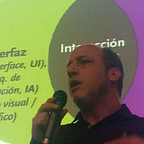UX Decision Hierarchy
Many misunderstandings between Business and Design are avoided when we distinguish between design execution and design decisions.
It usually happens that the Business hires designers to “design”, and the two parties believe they are talking about the same thing … when actually, the Business is not expecting designers to make design decisions. But, to execute the design decisions that the business already made before calling the designers.
In other words, “make it pretty”.
This type of misunderstanding results not only in frustrations for all involved, but in various forms of waste (understood under the Lean philosophy): transportation (inefficient paper trails and communication failures), overproduction, over-processing, defects and non-utilized talent.
When in Kambrica we began to apply the distinction between design execution and design decisions, we found the space to be able to work those decisions together with Business. And on our projects, we discovered and started working on two more levels, which today are part of our UX consulting philosophy: Business decisions, and Organization’s values.
When design decisions are not supported on business decisions, they are subject to arbitrariness, changes of heart, second-guessing and suspicion by all involved. Common symptoms are that the design “doesn’t cut it”, that stakeholder “doesn’t feel it’s right”. Always there are shadows of doubt whether something else could have been done. Not necessarily better … but different. A situation that is inevitable if the expectation of the Business is that the design will surprise it. Because the surprise of the design being presented, lasts only a few moments. After the first glance, questions and requests begin to emerge, breaking down the basis of the decisions that had been taken up to that moment.
This loss of focus is greatly reduced when design decisions respond to business decisions. These decisions have the form of objectives: what we want to achieve with the project. Or, in Design terms: what problem are we trying to solve, whom are we solving it for, and how will we know if we have succeeded?
Sometimes, the proposed design leads to questioning business decisions: that is not only valid, but it’s for us a much deeper and more mature expression of “design thinking” than having a wall covered with post-its.
But we found that with that is not enough. Designing the User Experience requires making decisions about what experience we want to offer to those users. And ultimately, how we want to treat them. These decisions are also arbitrary, and must be expressed in the organization’s values.Without organization’s values aligned to UX, the Business may lose direction and consider decisions that could harm the relationship with its users and customers.
Few organizations have Vision and Mission statements that describe how the organization intends to treat its clients. But those statements, still incomplete, are always the best starting point to achieve those definitions.
Our UX Decision Hierarchy has a pyramid shape, representing that each level must be supported in the previous ones. And it has “UX” as a capstone, representing that although the execution of the design will be the point of contact of the users with the brand, the User’s Experience is the consequence of the decisions of everyone involved in the process.
